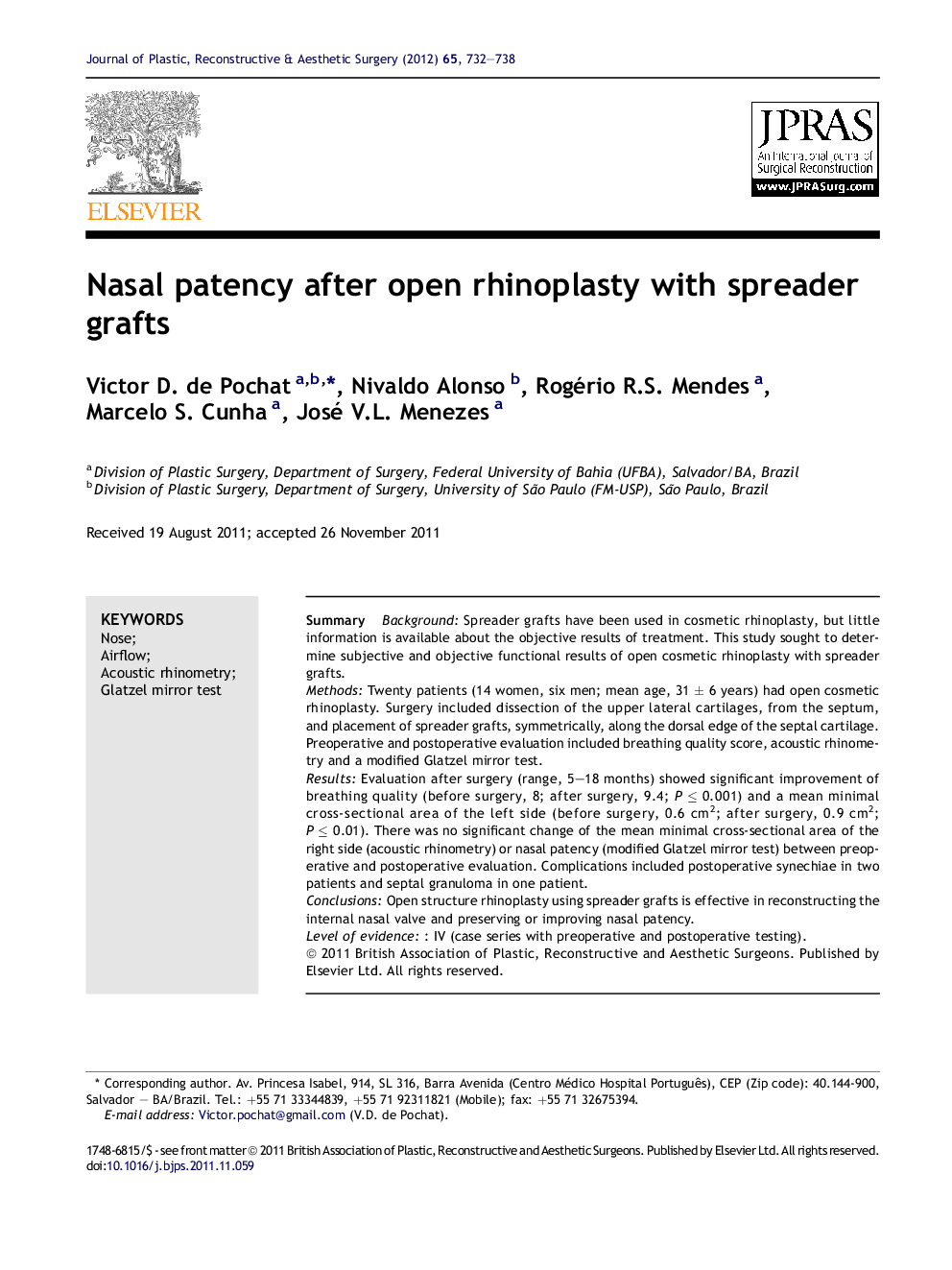| Article ID | Journal | Published Year | Pages | File Type |
|---|---|---|---|---|
| 4118448 | Journal of Plastic, Reconstructive & Aesthetic Surgery | 2012 | 7 Pages |
SummaryBackgroundSpreader grafts have been used in cosmetic rhinoplasty, but little information is available about the objective results of treatment. This study sought to determine subjective and objective functional results of open cosmetic rhinoplasty with spreader grafts.MethodsTwenty patients (14 women, six men; mean age, 31 ± 6 years) had open cosmetic rhinoplasty. Surgery included dissection of the upper lateral cartilages, from the septum, and placement of spreader grafts, symmetrically, along the dorsal edge of the septal cartilage. Preoperative and postoperative evaluation included breathing quality score, acoustic rhinometry and a modified Glatzel mirror test.ResultsEvaluation after surgery (range, 5–18 months) showed significant improvement of breathing quality (before surgery, 8; after surgery, 9.4; P ≤ 0.001) and a mean minimal cross-sectional area of the left side (before surgery, 0.6 cm2; after surgery, 0.9 cm2; P ≤ 0.01). There was no significant change of the mean minimal cross-sectional area of the right side (acoustic rhinometry) or nasal patency (modified Glatzel mirror test) between preoperative and postoperative evaluation. Complications included postoperative synechiae in two patients and septal granuloma in one patient.ConclusionsOpen structure rhinoplasty using spreader grafts is effective in reconstructing the internal nasal valve and preserving or improving nasal patency.Level of evidence: IV (case series with preoperative and postoperative testing).
